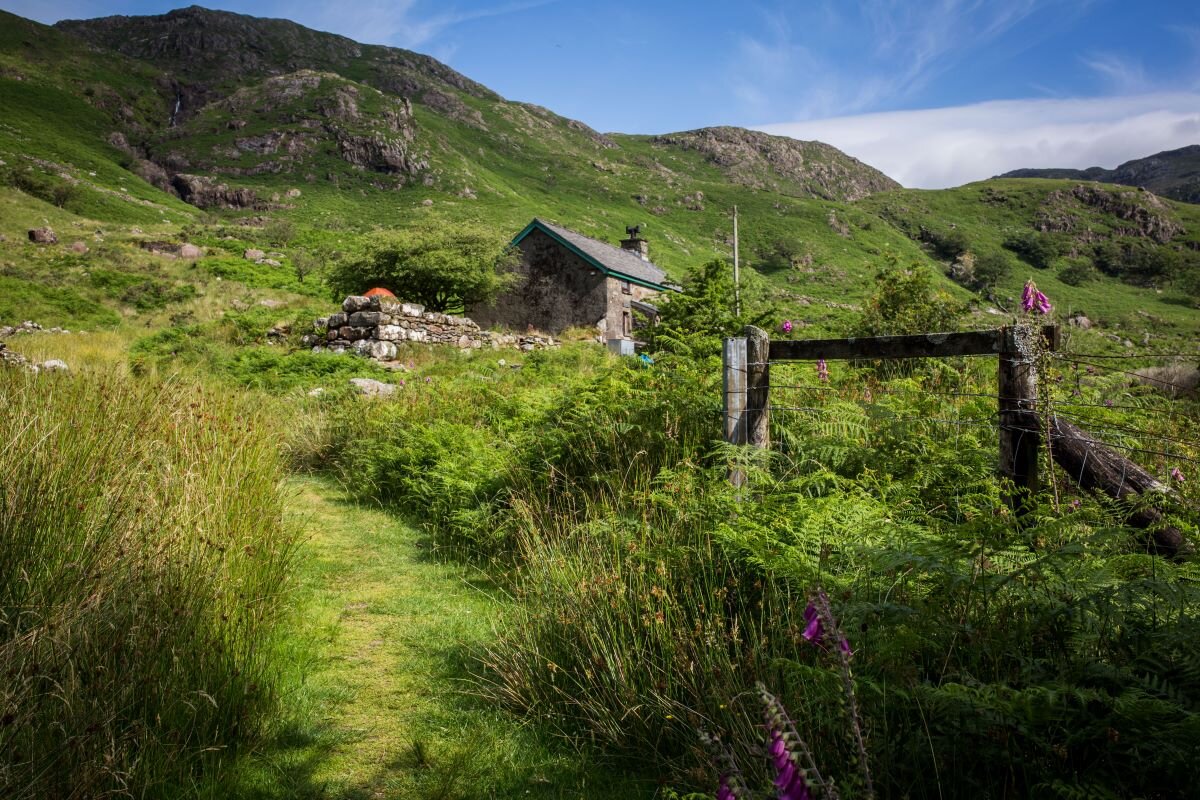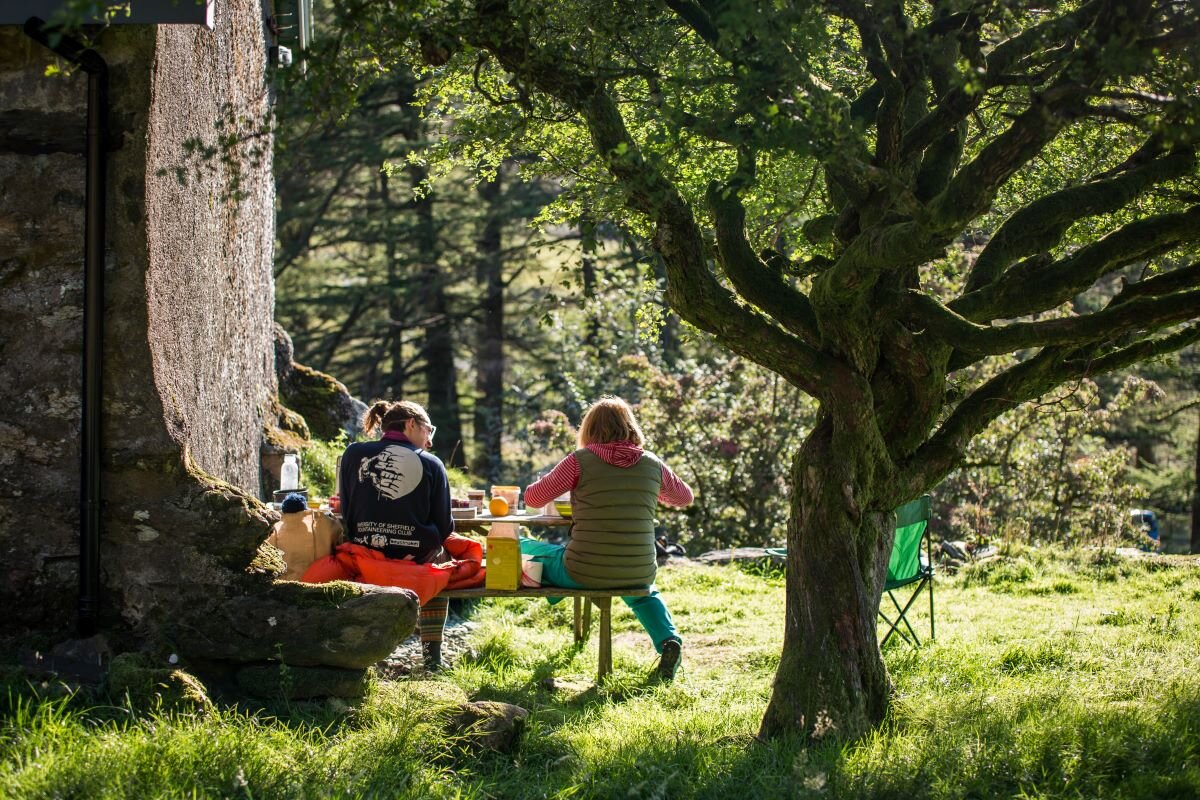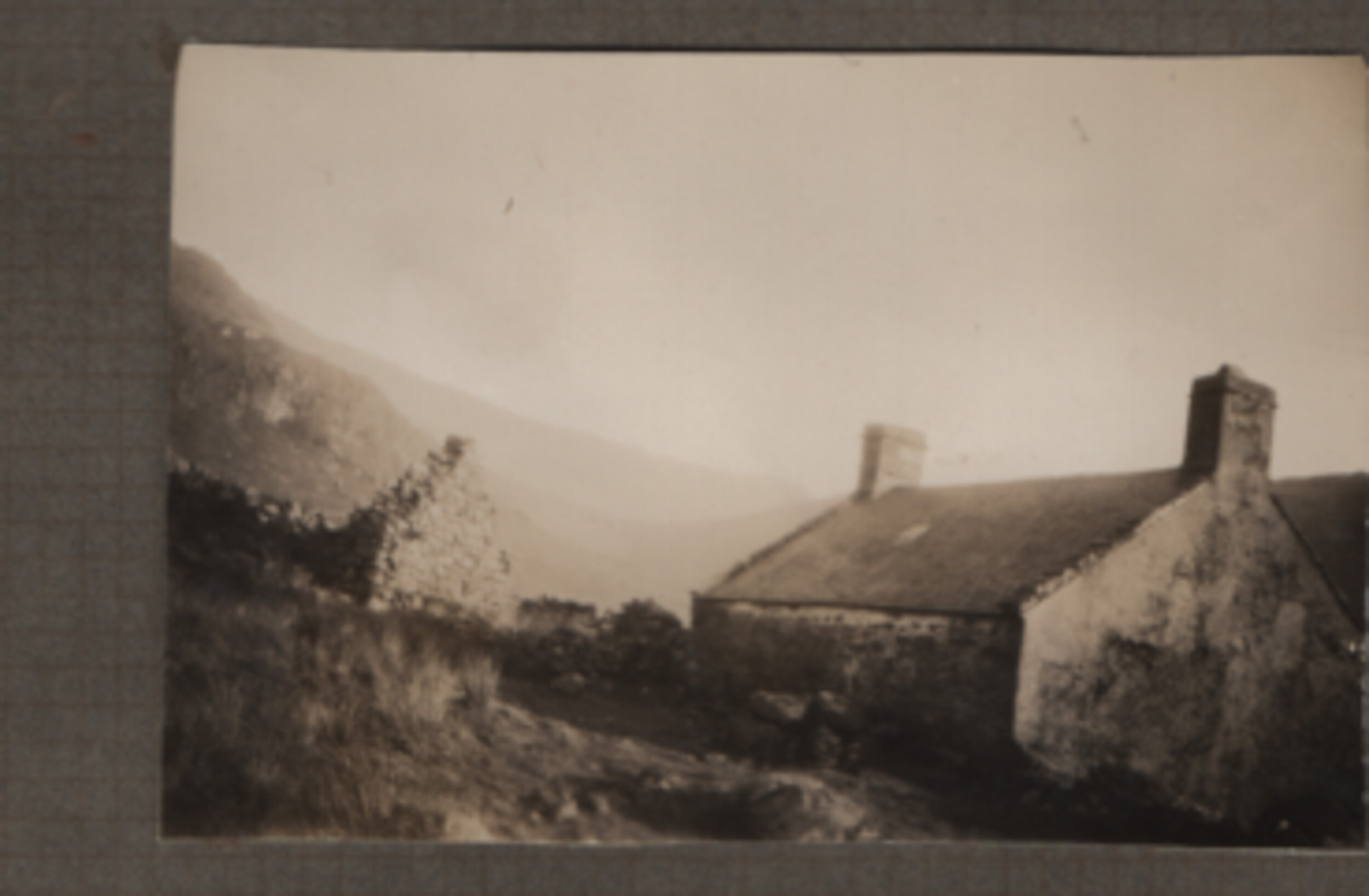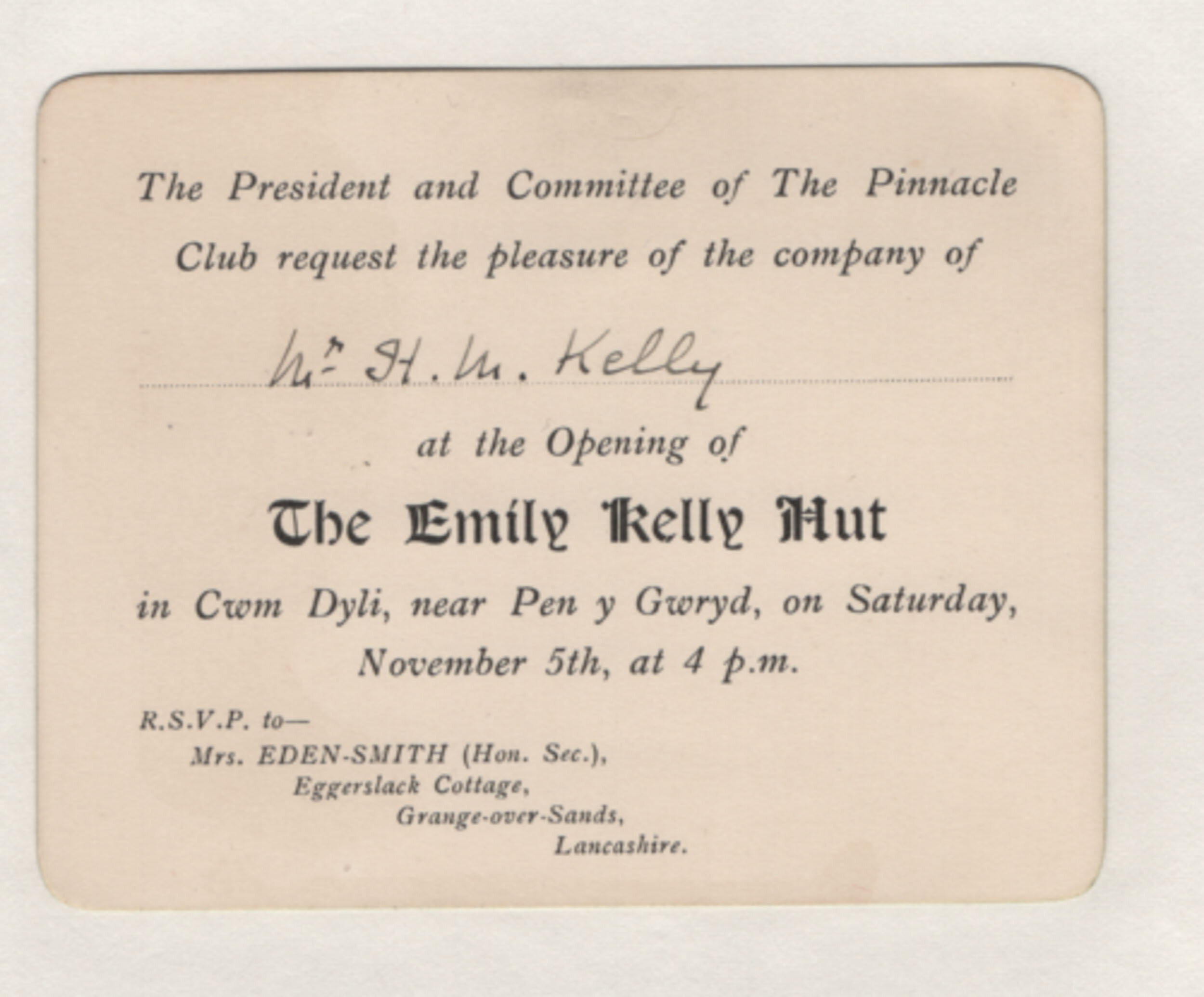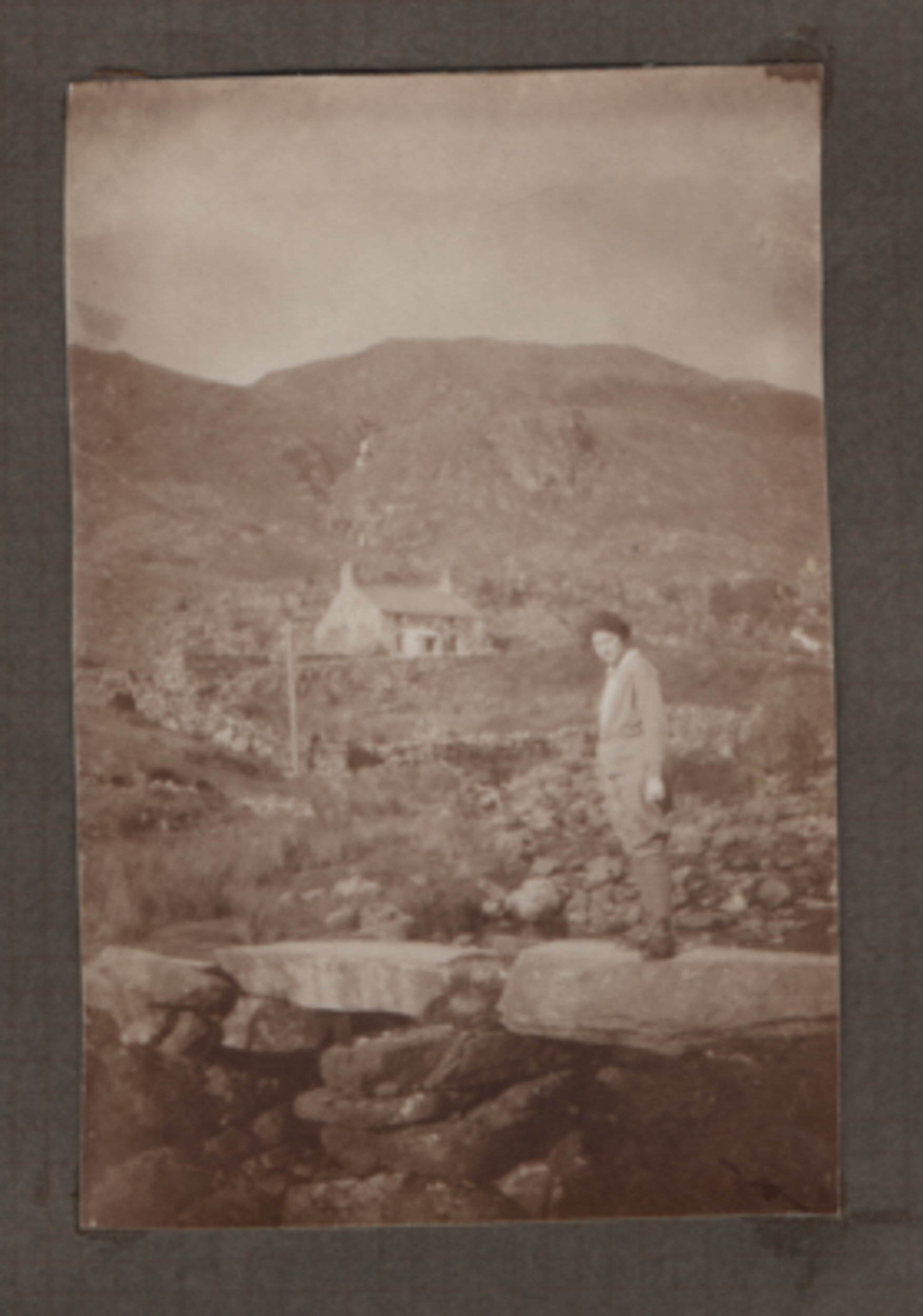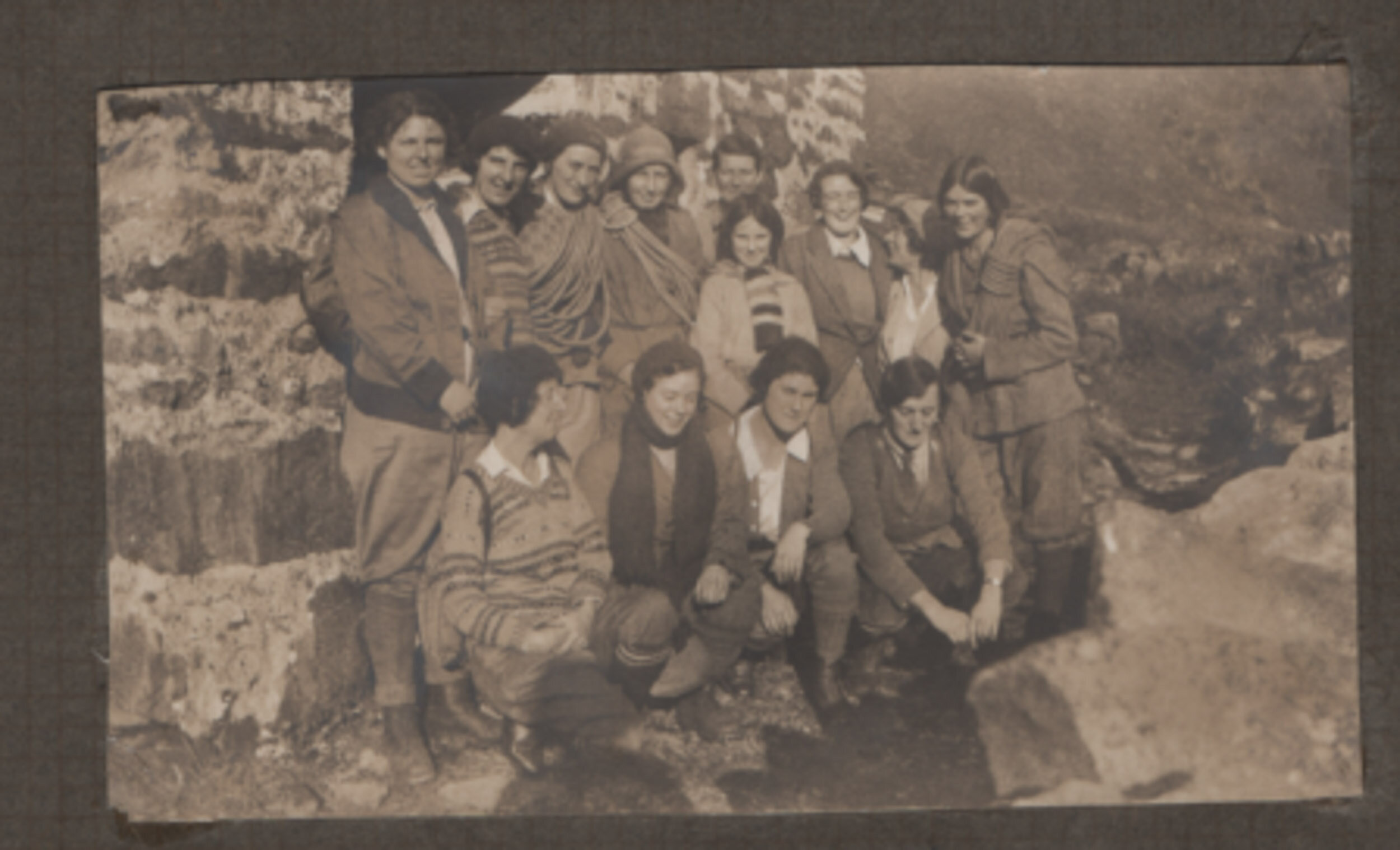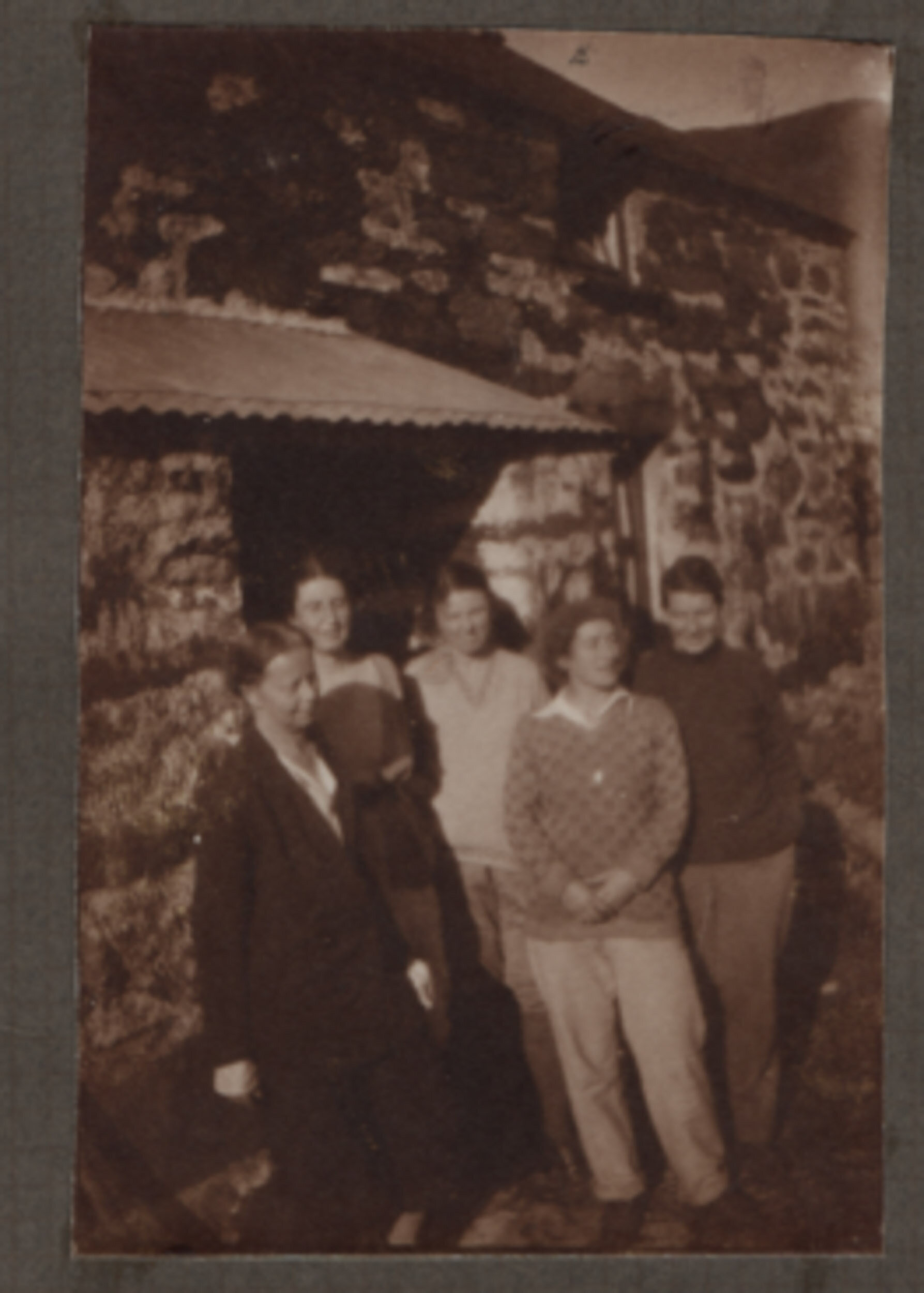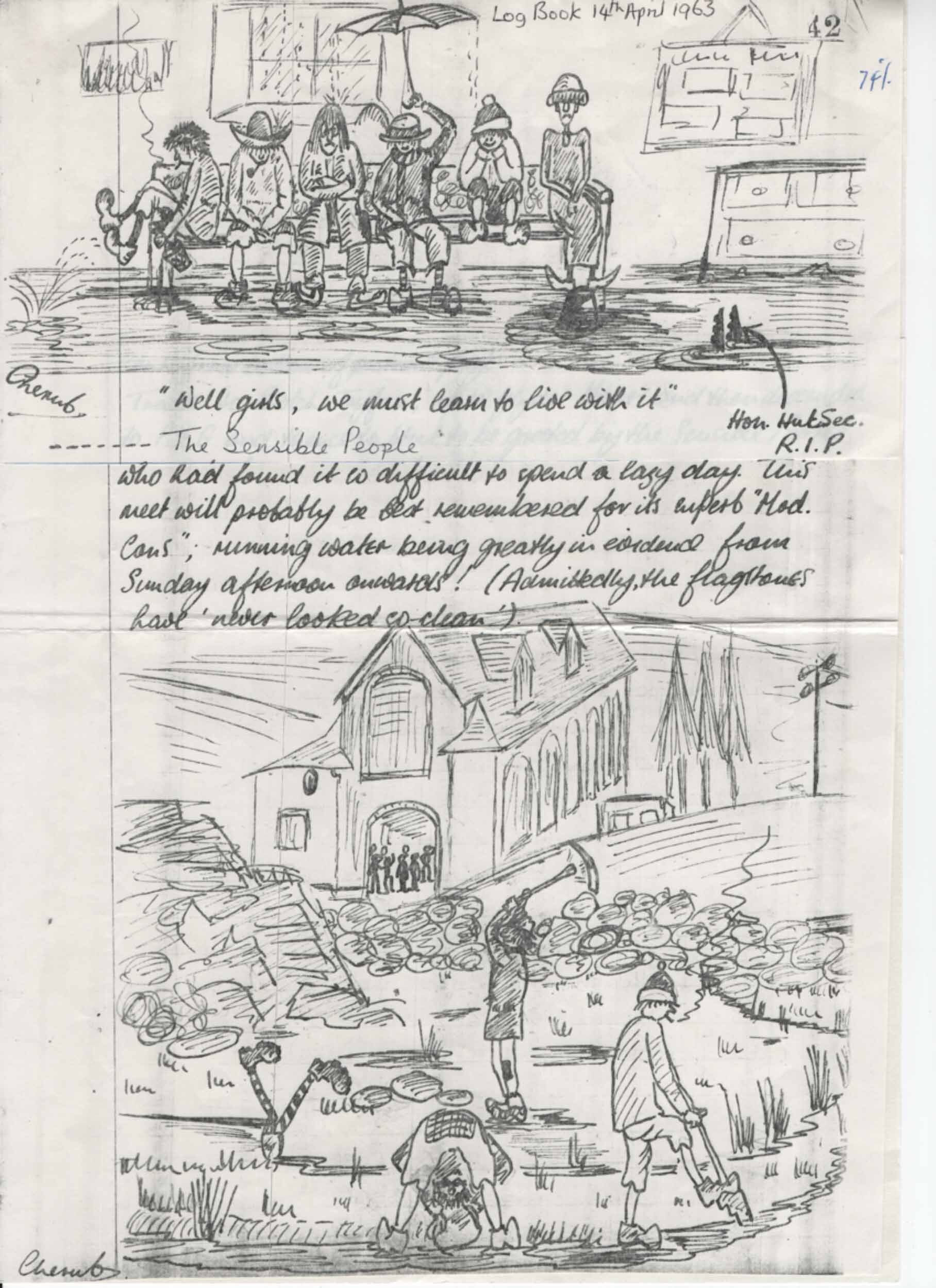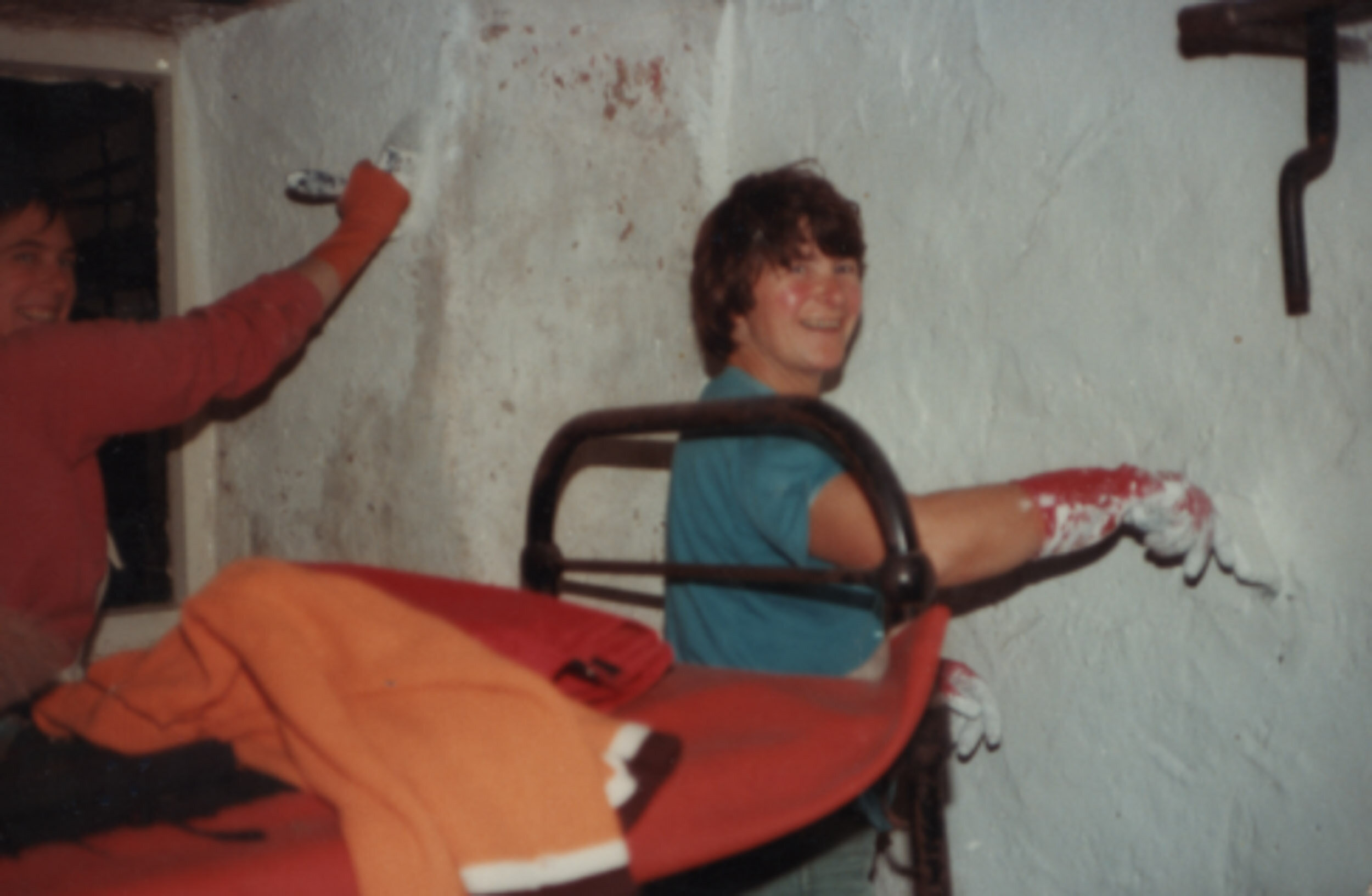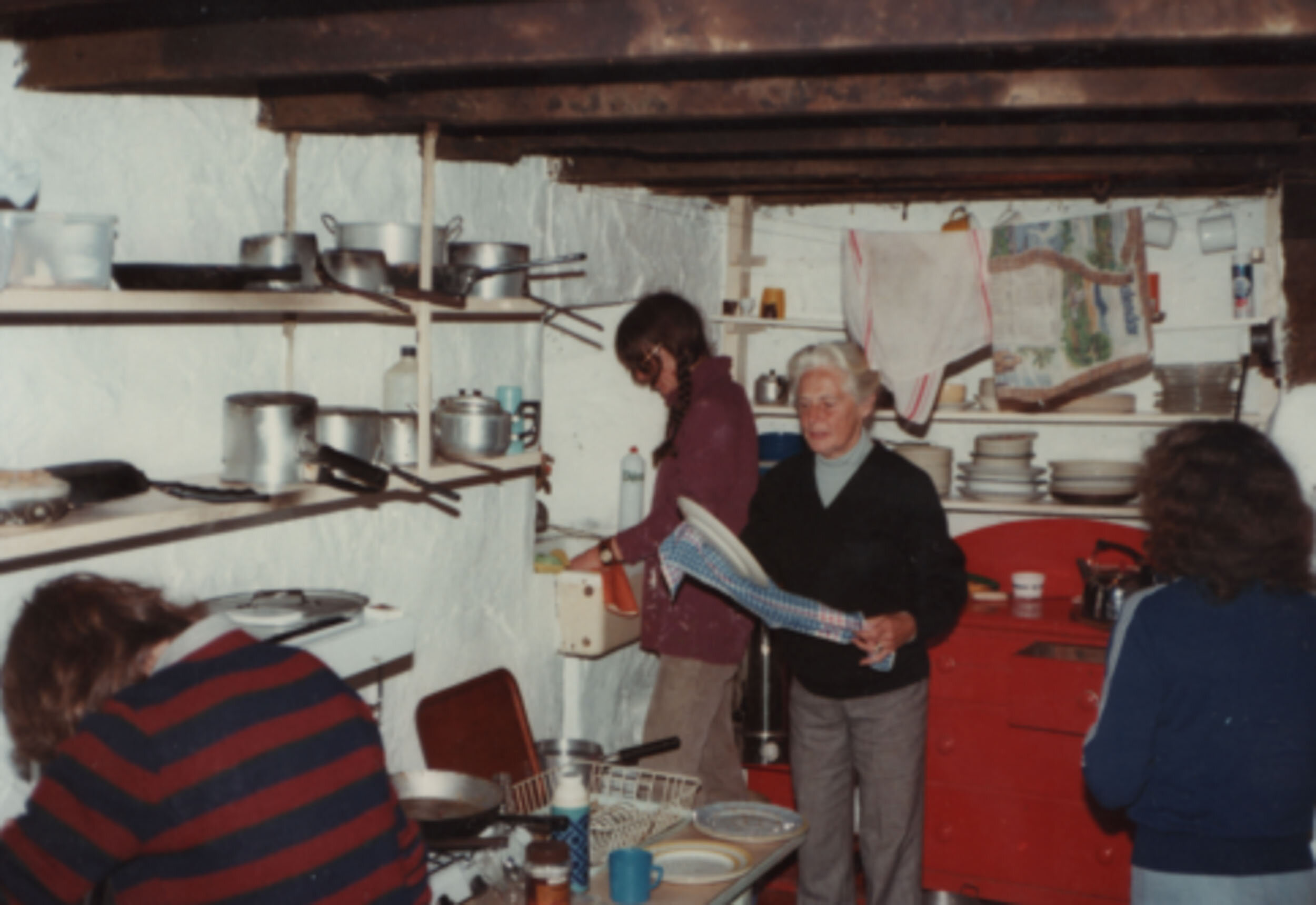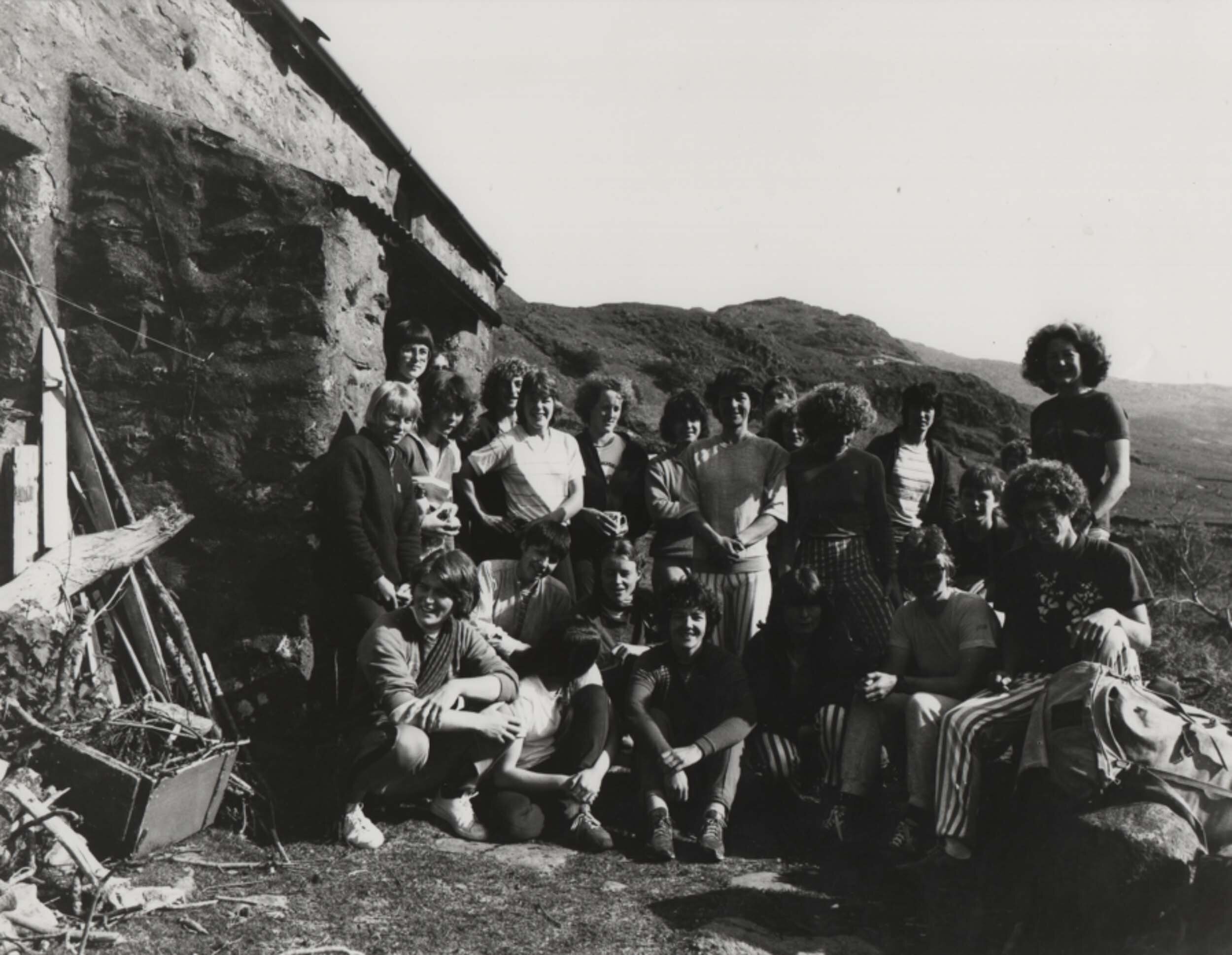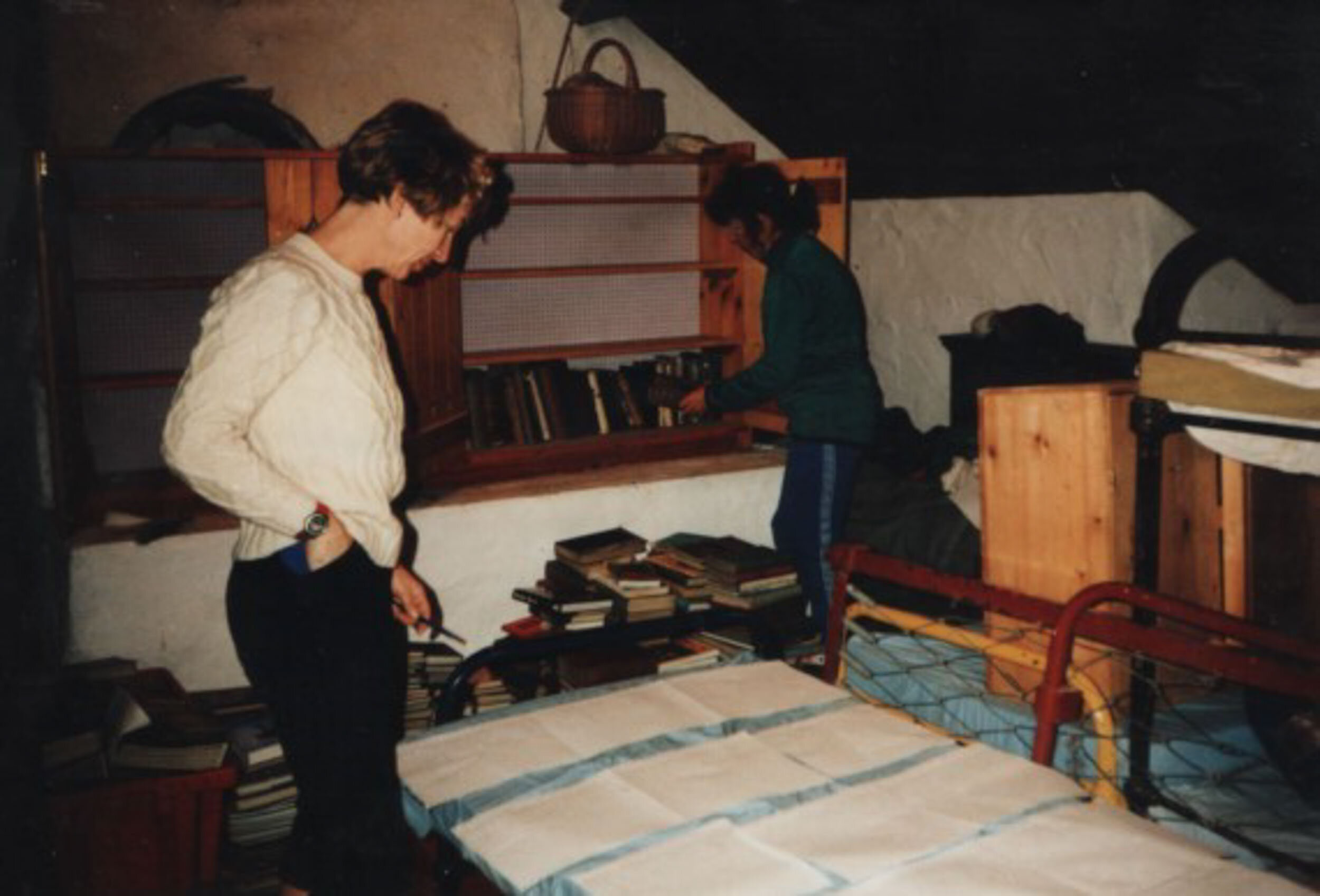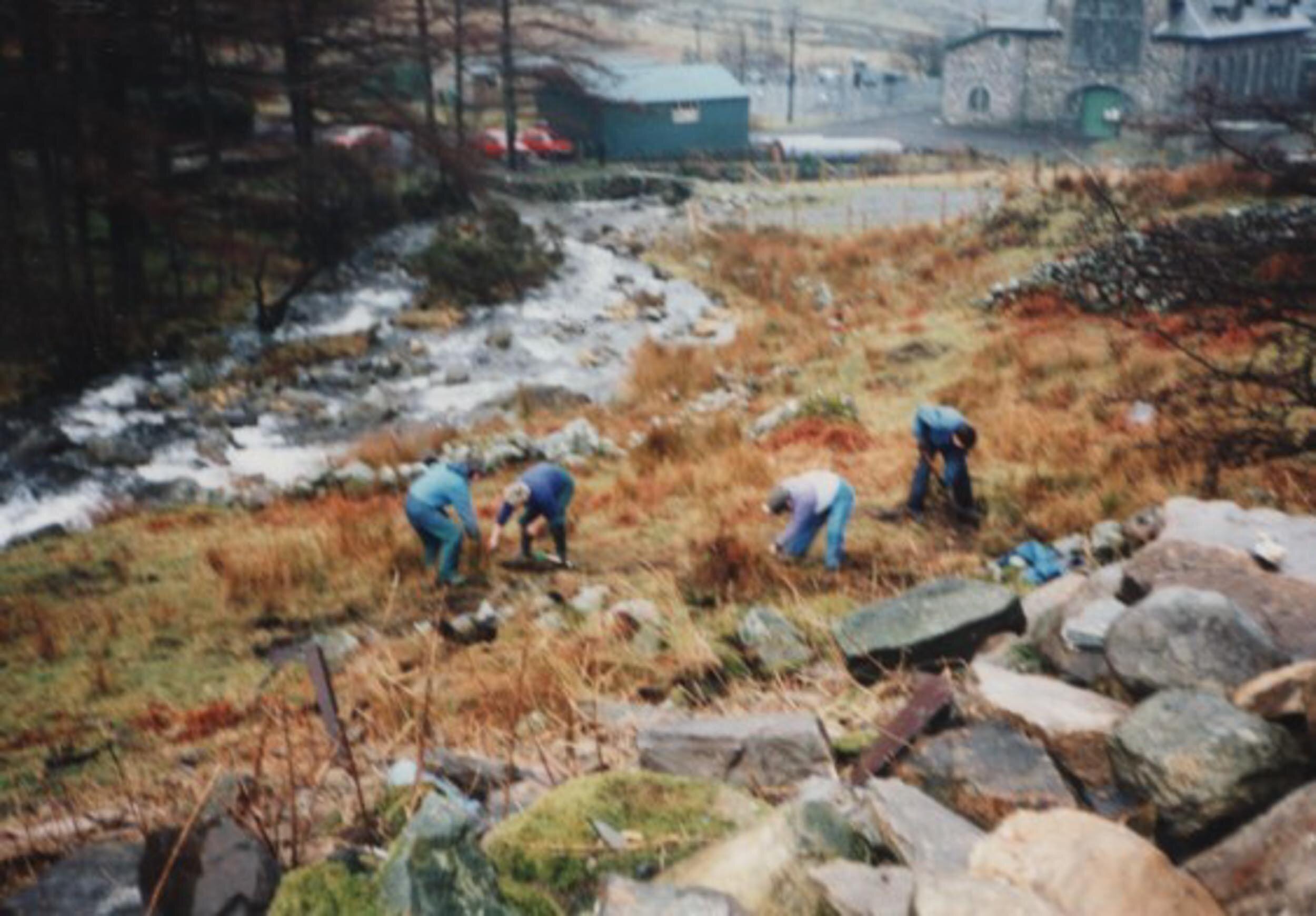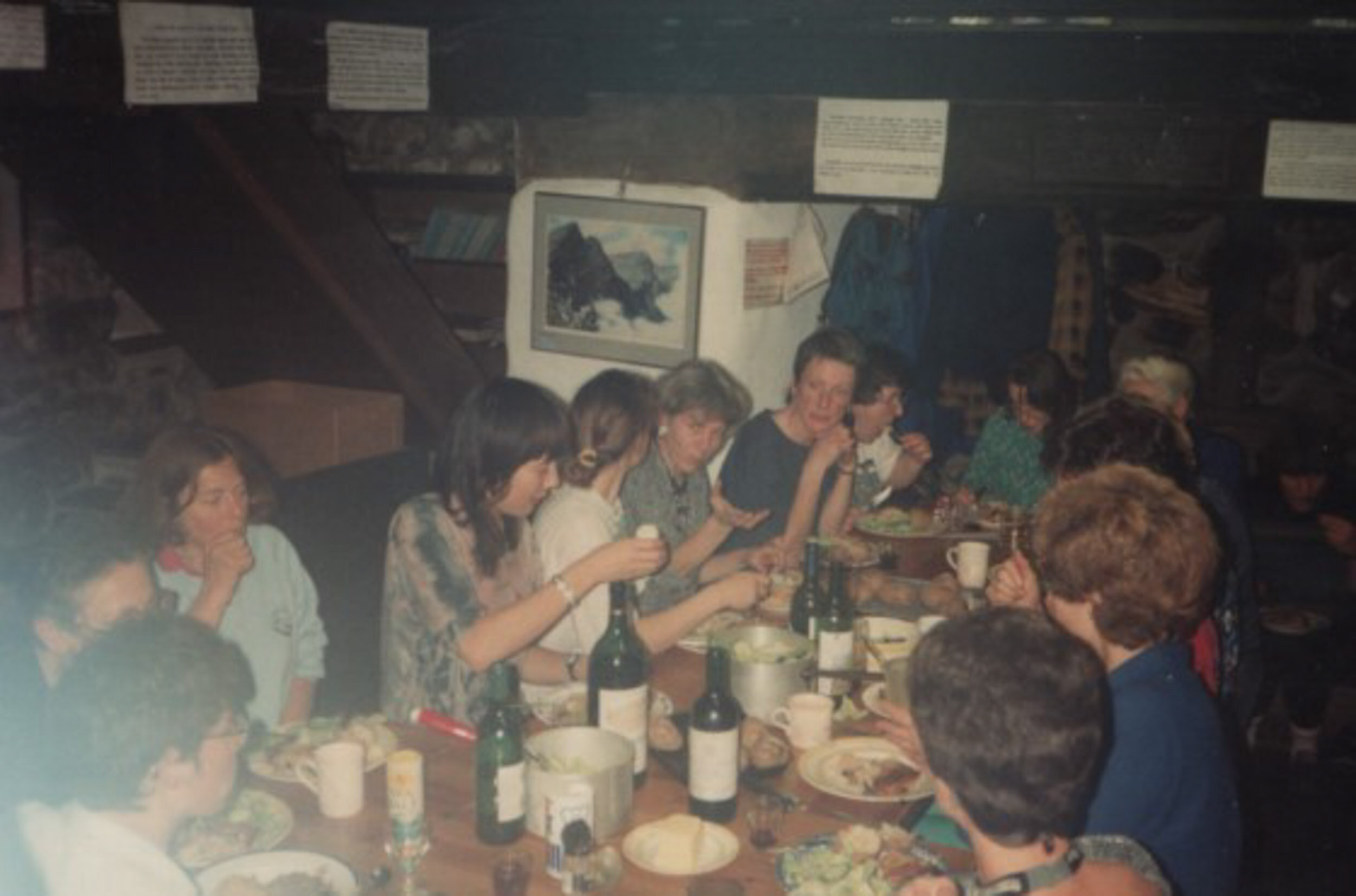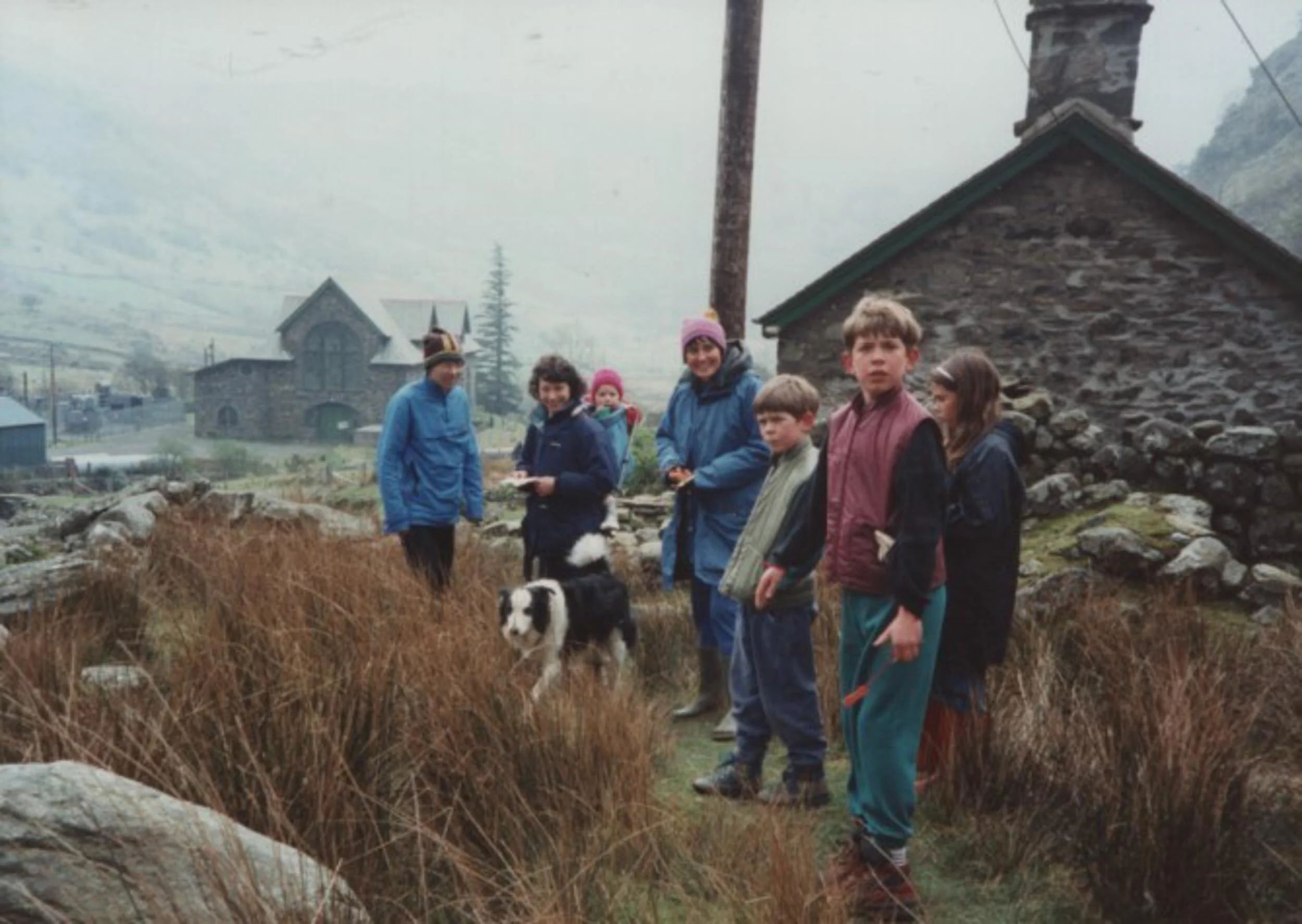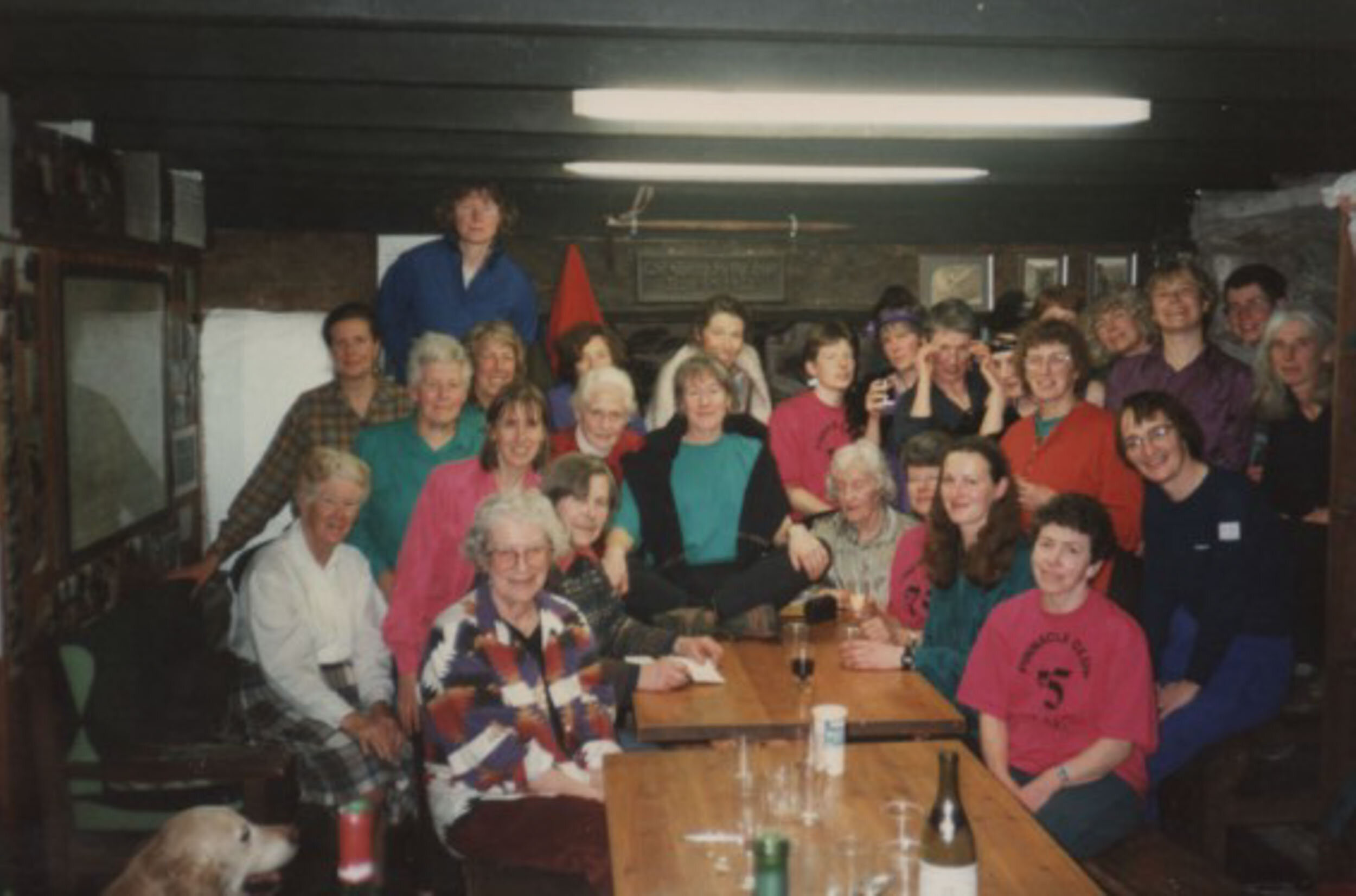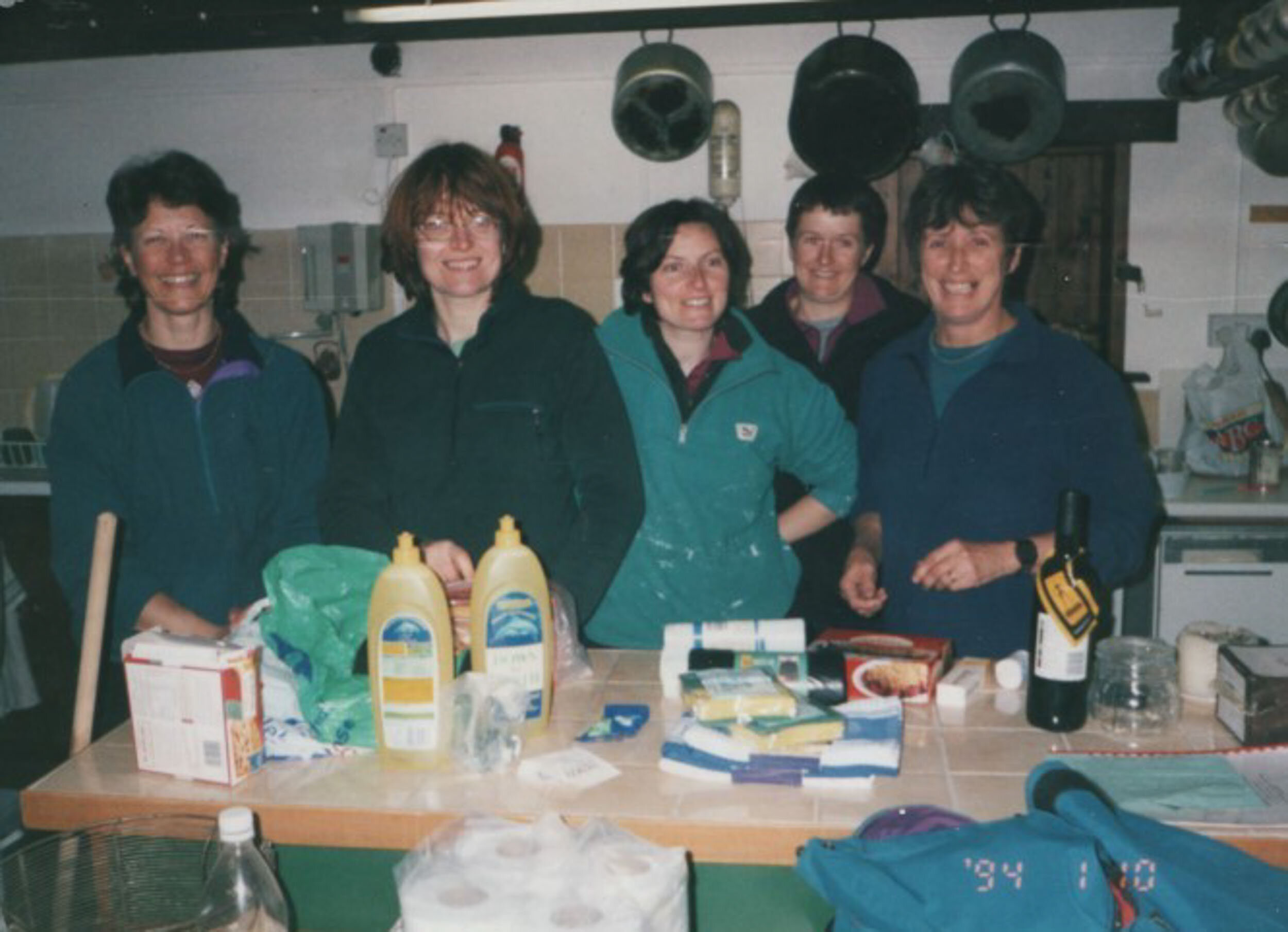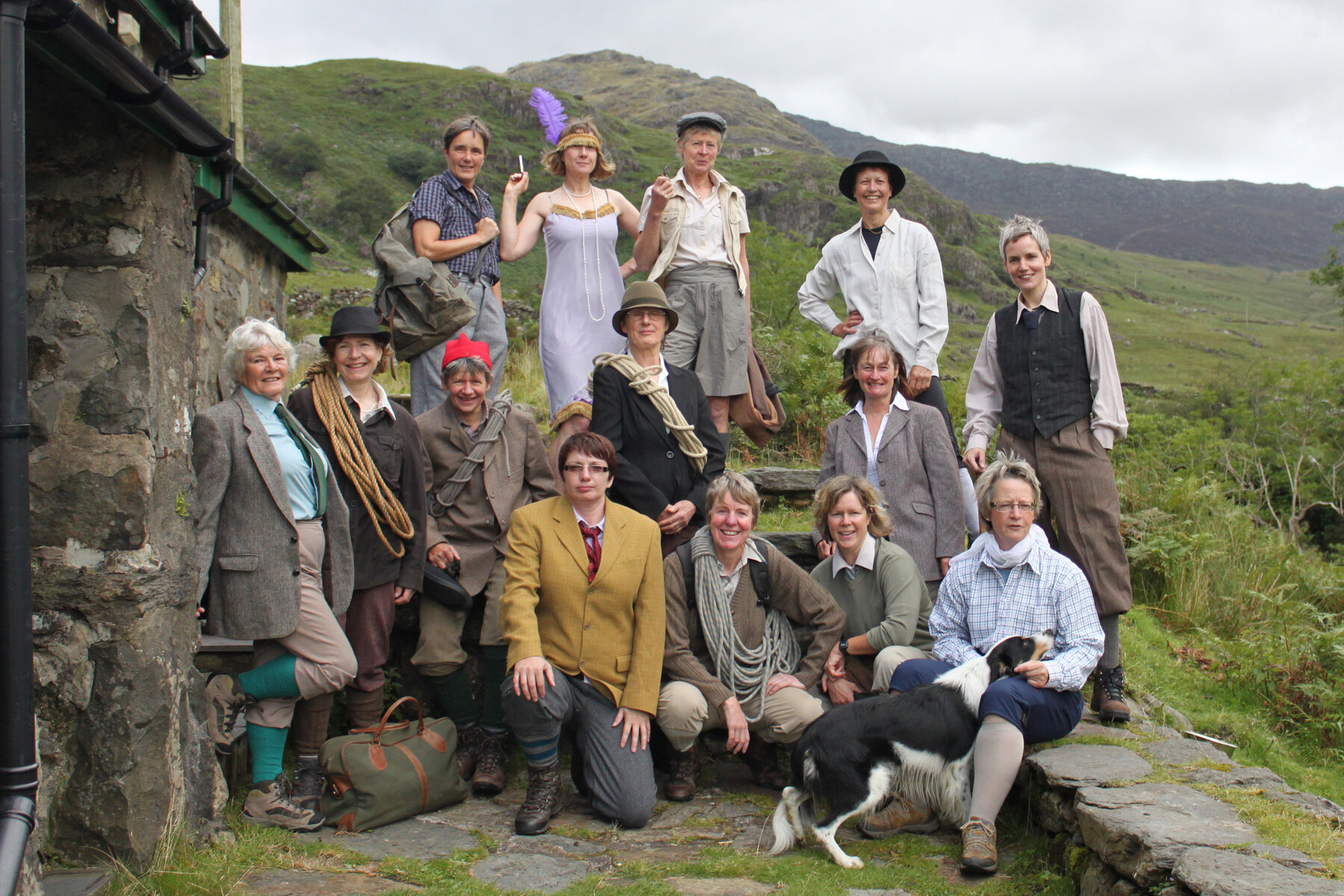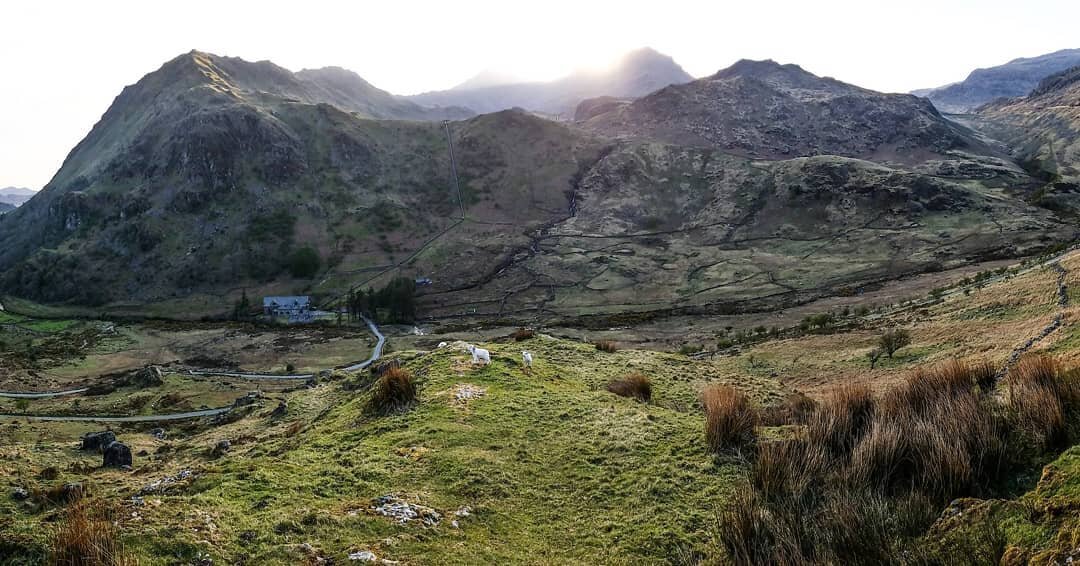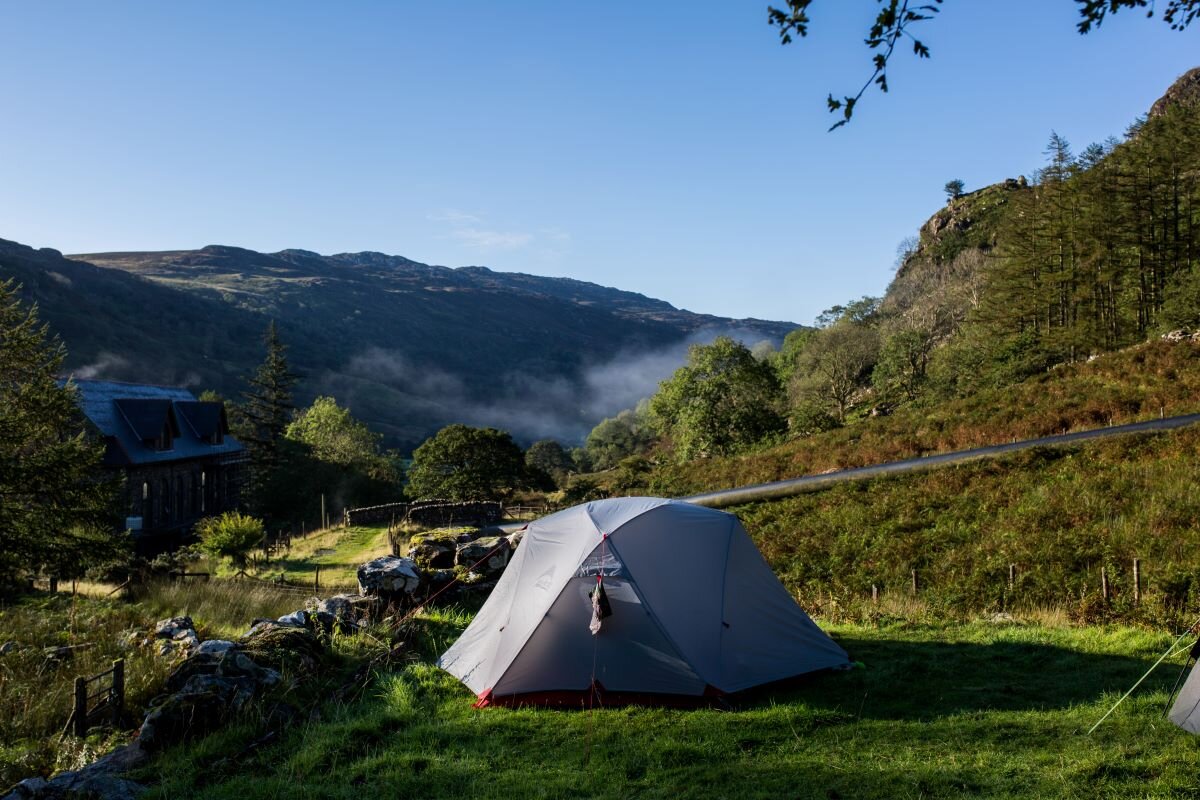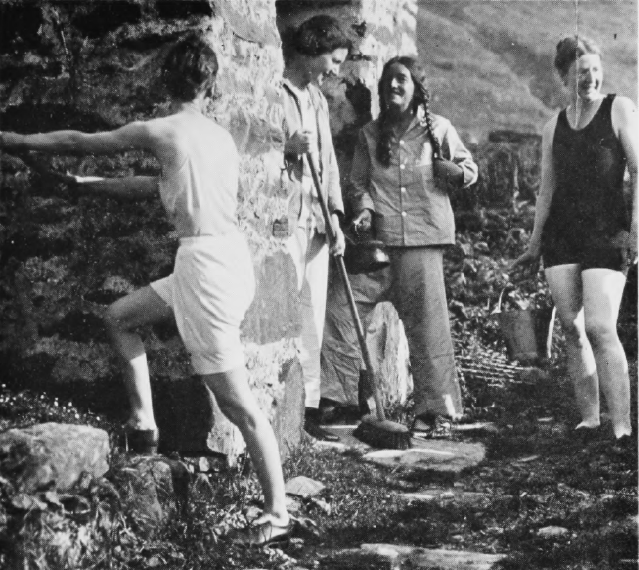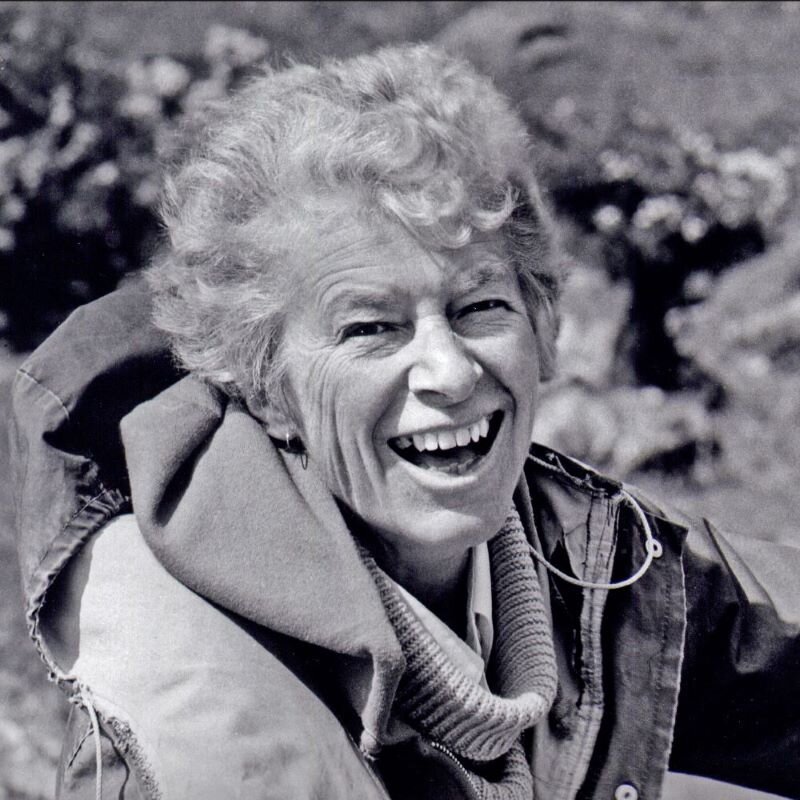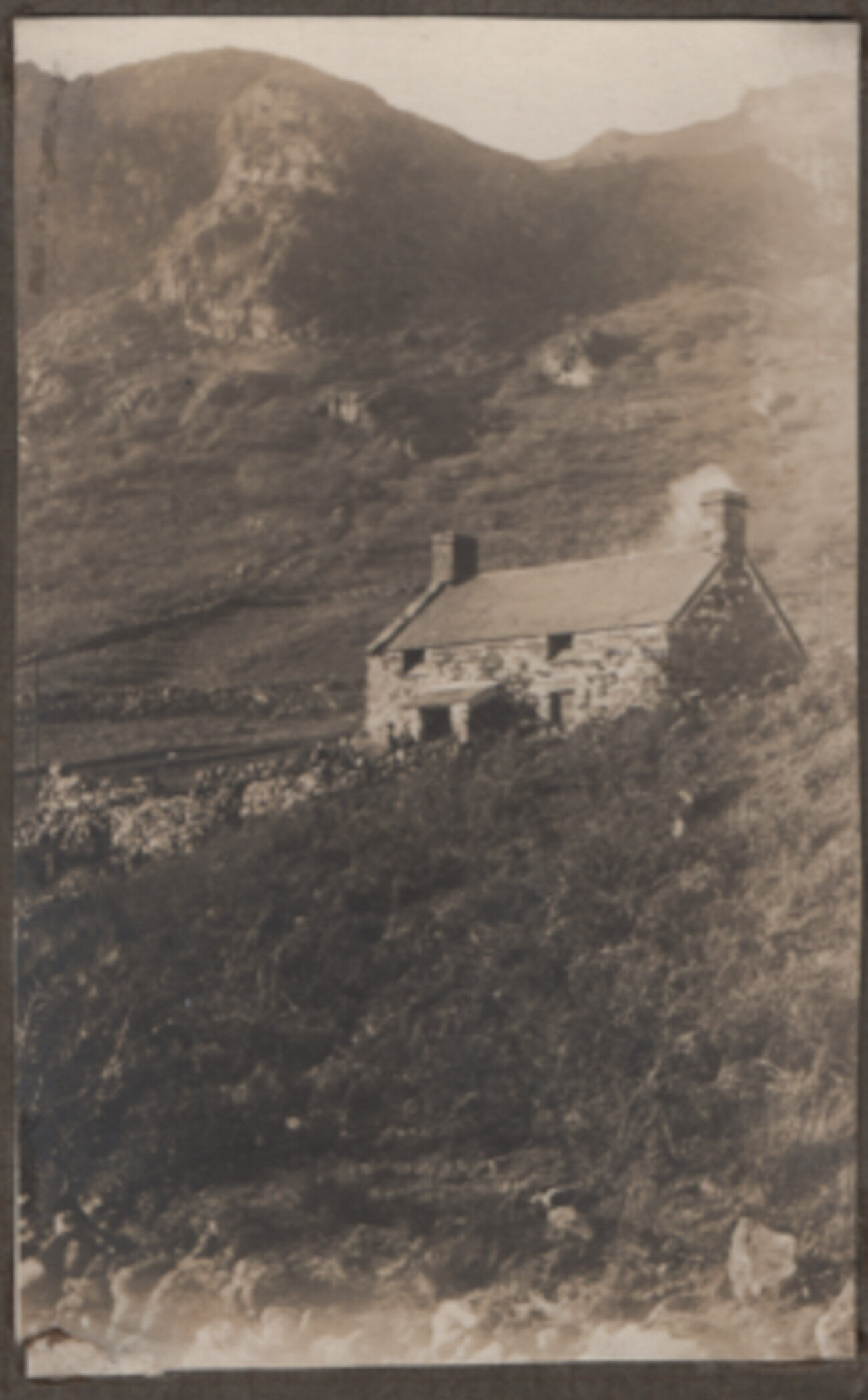A home in the hills: the Emily Kelly Hut
The hut at Cwm Dyli, in the Gwynant Valley, has been the Pinnacle Club’s home in the hills since 1932.
It was the Pinnacle Club Easter meet, 1932.
Four members had climbed Lockwood's Chimney - then as now a traditional activity for wet weather - and were eating their sandwiches in the rain. Evelyn Lowe (later Leech) spotted a cottage above the power station, and at once saw its potential as a good club hut. By September, the North Wales Power Company had agreed a 5 year lease at £10 p.a. A further £8 made the cottage habitable, and also paid for the installation of electric light, the hut's crowning glory, and the envy of many a visitor.
The opening ceremony took place on November 5, 1932
“Dr. Corbett, our then President, stood alone in the little stone porch to perform the simple ceremony. She welcomed our guests, many of them representatives of kindred and sympathetic clubs; she spoke of the Club, of its growth and advance ; of the joy it would have given to its Founder to realise that her hopes and faith were being justified. ...[She] finished on a practical note: ‘And now I hope you'll all come in and have tea’.“ — The Opening of the Emily Kelly Hut, journal no 5, 1932-34
Pictured: the opening of the hut, including Evelyn Lowe, Mary Lear, Daloni Seth-Hughes, Jennet Seth-Hughes, Marjorie Wood, Penelope Seth-Hughes.
The hut was named after Emily (Pat) Kelly, the club's founder, who had died in 1922.
It had two rooms downstairs, the larger with an open fire, the smaller a stove. There was a pecking order for proximity to the fire; the senior members, sitting nearest, were hot, while newer or younger members sat further back in a freezing draught. The stairs went up the middle of the hut; upstairs were green sailcloth bunks with scarlet blankets.
Pictured: Emily (Pat) Kelly on The Scoop (HVS), Castle Naze, in 1920. Credit: A Burgess.
At first, cooking was done on Primus stoves
...and a big red kettle would boil on the fire. There was no tap, so for cooking water was brought from the stream in buckets, and people washed themselves in the stream itself. Later a large jug and basin were available indoors.
Pictured: Bunny Bull fetches water in 1960.
In wet weather a spring would bubble up through the flagstones
...run across the floor in front of the fireplace and exit via a channel at the foot of the front wall to the door. This spring featured regularly in the hut log book until the 1980s, and Sheila Crispin's cartoon from the 1960s catches the atmosphere.
“One hot day Marjorie came back early for the evening meal; Evelyn had prepared a stew in a bucket and it was heaving with maggots. To her horror Evelyn took it in her stride and scraped them off; Evelyn thought her rather fussy when she opened a tin instead.” — Shirley Angell, journal no. 19, 1982-84
"Early in the war Evelyn Lowe invited me to stay at the Pinnacle Club Hut... I bicycled up from Criccieth and arrived late in the evening to find the gates bolted and barred. Without thinking I looked round for a way of getting to the hut, from which there came a faint glow indicating that my friend was already there. Negotiating various fences and barbed wire entanglements and jumping the stream, I arrived at the hut feeling rather pleased with myself, only to be told that the Power Station was a place of National Importance and that I was lucky not to have been shot by the Home Guard." — Nea Morin, A Woman's Reach (1968)
“You can see from the photograph that we were so keen to start the day's Hut chores we couldn't wait to get fully dressed.
But of course, our Hut was then our pride and treasure: the first women's Club to have a Hut: we were as proud as—Oh dear, peahens doesn't somehow sound half as proud as peacocks! Neither peril by water—lack of it in a tap and excess of it on the floor in really wet weather, nor peril by smoke from the vast old chimney, turned us away.” — Evelyn Leech, journal No. 14, 1969-70
Pictured: a hut working party in 1935. Credit: Evelyn Leech
In later years the smaller room evolved into a store room and became an obstacle course
…particularly when it was strewn with wet gear. It had two bunks just inside the door, for the benefit of snorers, late arrivals, or male visitors.
Supplies could be bought locally till the 1960s: milk from Mrs Jones at the first farm down the road, eggs from Mrs Williams at the power station, and groceries ordered from Messrs Pritchard at Beddgelert, who would deliver. This certainly made the job of the meet leader easier, since she was responsible for providing breakfast and dinner for everyone - a practice only formally abandoned in 1978.
Pictured: Sheila McKemmie and Margaret Darvall in 1982.
The hut was leased until 1988, when the Pinnacle Club negotiated its purchase
it was soon gutted, reroofed and modernised throughout. The stairs were moved, creating a single, open room downstairs. The fireplace was opened out and a stove installed, which improved the heating drastically. At last, a dampproof course and raised floor meant goodbye to the wet weather spring. Upstairs became more spacious and new bunks were made. In 1995, a grant paid for an extension which gave us the luxury of indoor toilets, a shower and drying room, and an innovative sewage system using reed beds. In 2006 storage heaters were installed, reducing winter damp.
Cwm Dyli has always been less accessible than most huts
When the power station was manned you could get a key to the gates from its staff, but for many years parking right at the top of the lane was the norm, making it a long walk with gear and food to get to the hut. During her Presidency (1999-2002) Cathy Woodhead opened negotiations to facilitate parking near the power station. In 2003, when Sally Keir was President, the club received permission from the electricity board and now members only have to cross the narrow slate bridge and the final hundred metres of hillside to reach the hut.
“Those shod in Merrell trainers can expect to go down several times. And don't forget, on more occasions than not, it's going to be dark.” — Fred Reynolds, journal no. 27, 2006-08
Pictured: access to the hut blocked by a flash flood in 1964 while the water pipeline was under construction. Credit: Keele University MC
Audio stories
Gwen Moffat. Credit: John Cleare
Denise Evans on Nea (VS), Clogwyn y Grochan. Credit: John Cleare
Margaret Clennett, Gavarnie, Pyrenees, in 2006. Credit: Pete Stokes.
Photo gallery
Click to move through images.
